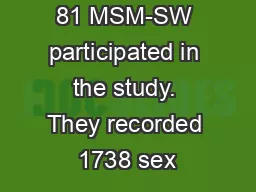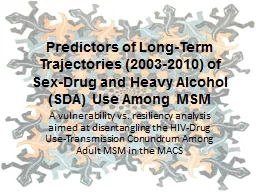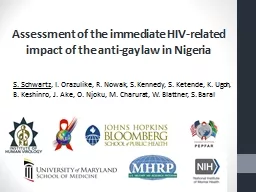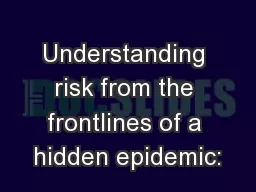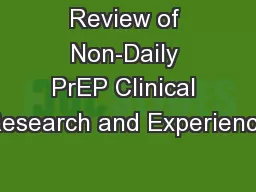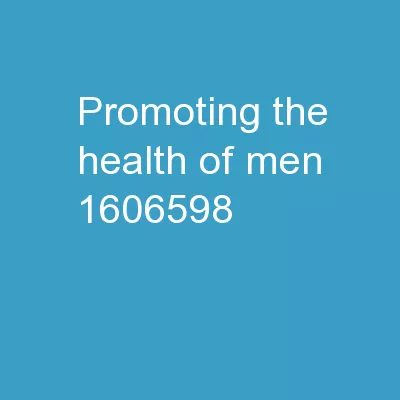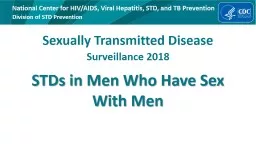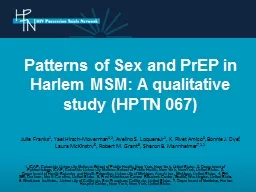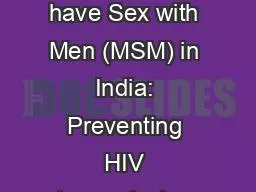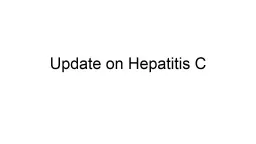PPT-81 MSM-SW participated in the study. They recorded 1738 sex
Author : stefany-barnette | Published Date : 2016-08-08
Gender exclusivity Most MSMSW reported both male and female partners ie nonexclusive however sex with men accounted for 80 of encounters on follow up 23 1981 MSMSW
Presentation Embed Code
Download Presentation
Download Presentation The PPT/PDF document "81 MSM-SW participated in the study. The..." is the property of its rightful owner. Permission is granted to download and print the materials on this website for personal, non-commercial use only, and to display it on your personal computer provided you do not modify the materials and that you retain all copyright notices contained in the materials. By downloading content from our website, you accept the terms of this agreement.
81 MSM-SW participated in the study. They recorded 1738 sex: Transcript
Download Rules Of Document
"81 MSM-SW participated in the study. They recorded 1738 sex"The content belongs to its owner. You may download and print it for personal use, without modification, and keep all copyright notices. By downloading, you agree to these terms.
Related Documents

